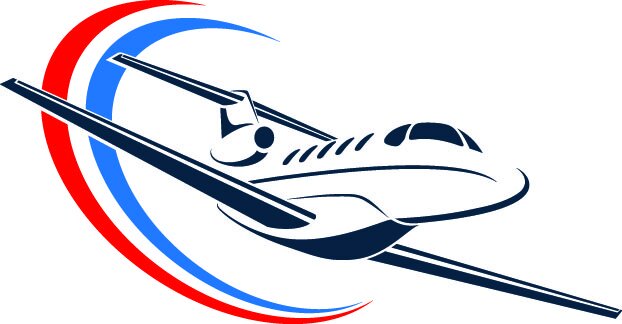
HIMS-Alcohol
The broad outline of the program works as follows: A pilot is “identified” as a result of a DUI (DWI), company intervention, self-referral, or less commonly a positive DOT, TSA pick up, etc. Once identified, the next step is diagnosis, in which case the pilot is sent either to a HIMS psychiatrist or treatment center. If the diagnosis is positive for a substance use disorder, this is followed by in-patient rehabilitation, and detoxification if needed. If inpatient rehabilitation is not indicated, the airman can participate in an intensive out-patient program (IOP) for 6 weeks of therapy. The rehabilitation program should be one with extensive pilot-related experience for the best results. In “stubborn” cases, an IOP program may be indicated after in-patient treatment.
Towards the end of the initial treatment program, a HIMS AME is selected for follow up with the airman after discharge. Immediately after discharge the airman must begin AA or NA meetings on an almost daily basis. This is called the “90/90”: ninety meetings within a 90 day period. In addition, the airman joins an “aftercare group,” which by the FAA’s definition, is a weekly meeting of like-minded pilots in recovery. Aftercare is a way of working out the lingering problems often faced by these airmen. If the pilot also has a concurrent psychiatric diagnosis (depression, anxiety, etc.) he/she will need to be in therapy to specifically deal with that issue as well.
In the broader sense, “aftercare” is much more than a weekly group meeting. It encompasses the entirety of all that is required of the airman to maintain their sobriety. After treatment, the AME will immediately institute a random urine screening program. The FAA requires a minimum of 14 randoms within a 12 month period. Of course, urine testing has its potential pitfalls, so it is advisable to use one or more additional means to assure sobriety: breath analyzers (eg. SoberLink), blood test (PEth), or hair/ nail testing. Even if a pilot has a history limited to an alcohol use disorder, more extensive drug testing is often indicated to assure that the pilot has not switched to using another substance.
Once the pilot has completed their “90/90”, is solidly participating in aftercare, and has multiple negative drug tests, it may be time to proceed with the “P&P.” This is the referral to a HIMS Psychiatrist and a HIMS neuropsychologist for evaluation on the depth of the pilot’s recovery, and their level of cognitive functioning. Chronic use of alcohol or other mind-altering drugs leads to a deterioration of cognitive processing. It is best to wait 3-6 months after the pilot’s sobriety date, to perform these evaluations. It is not uncommon to receive an opinion suggesting that the pilot is not ready to return to the cockpit, and should return in 3-6 months for repeat evaluations.
However, once we get a “clearance” from the P&P, the AME can perform the physical exam and forward the entire file to the Federal Air Surgeon (FAS) in Washington, D.C. In the meantime, if the pilot has an airline job to return to, now is the time to identify a peer pilot and chief pilot who will be keeping an “eye” on the subject. These individuals will be required to provide a monthly report to the AME on the pilot’s condition and performance. Everyone involved with a pilot’s HIMS program is obligated to immediately notify the AME/FAA of any positive drug or alcohol test, or any deterioration in the pilot’s condition.
Length of Monitoring
The duration of Authorizations in the HIMS program have increased substantially over the years. Apparently, the FAA had been under pressure from the NTSB for some time to “require that all airman clinically diagnosed with substance dependence…who are medically certified by the FAA subsequent to such diagnosis, are followed under the guidelines for SI…for the period that they hold such certificates.” Nevertheless, permanent abstinence from mind and mood altering substances is expected for the duration of the pilot’s flying career.
However, there is now a 4-phase approach to progressive SI’s. The “Initial Phase” is the same as described above and is implemented the first year. The “Early Phase” (years 2-4) drops the requirement for annual HIMS psychiatric evaluations and continuing aftercare. The “Advanced Phase” (years 5-7) reduces the frequency of random testing, and the “Maintenance Phase” (Year 7 and on) only requires that the airman get his/her medical done with any HIMS AME.
How successful is the HIMS alcohol program?
The FAA has been tabulating data using a new on-line tool: From April 2011, through October 2019 (1st class only), there were 1162 individual pilots involved with 1367 “incidents” necessitating HIMS program entry. However, in the past 2 years that has increased to 200-250 new cases per year. The program success rate appears to be about 85% with sustained abstinence. The single relapse rate was 12.7 %, with 3% for 2 or more relapses.
Of the approximate 2500 AME’s only 204 HIMS AMEs have been certified as of the end of 2019.
According to the FAA, only 48 AMEs do the vast majority of HIMS work (6 or more cases).


